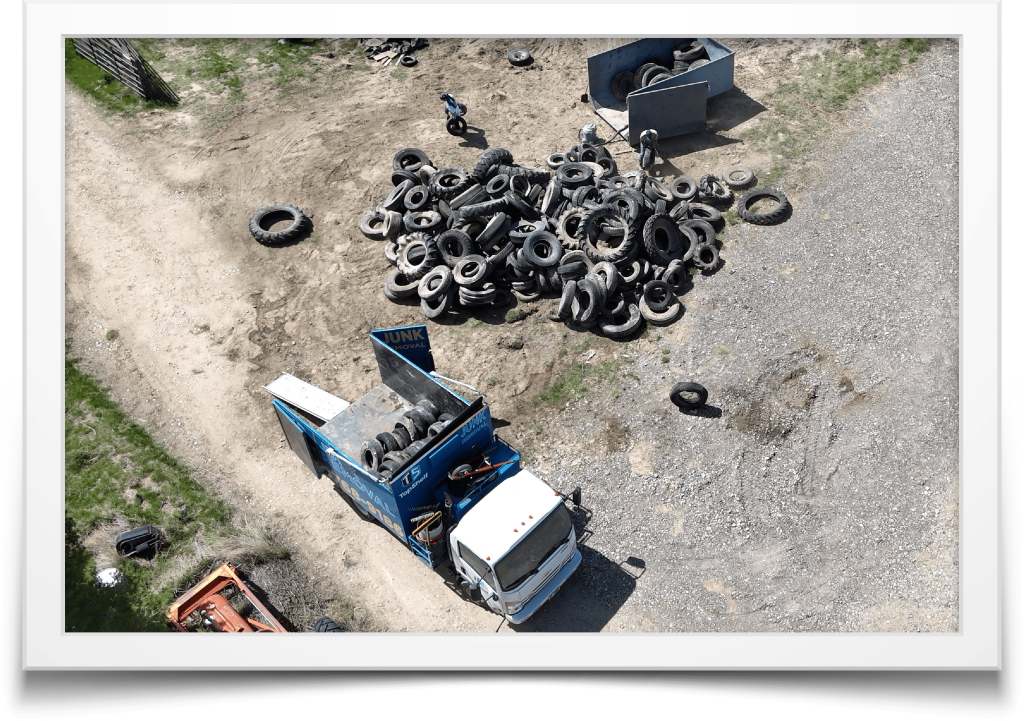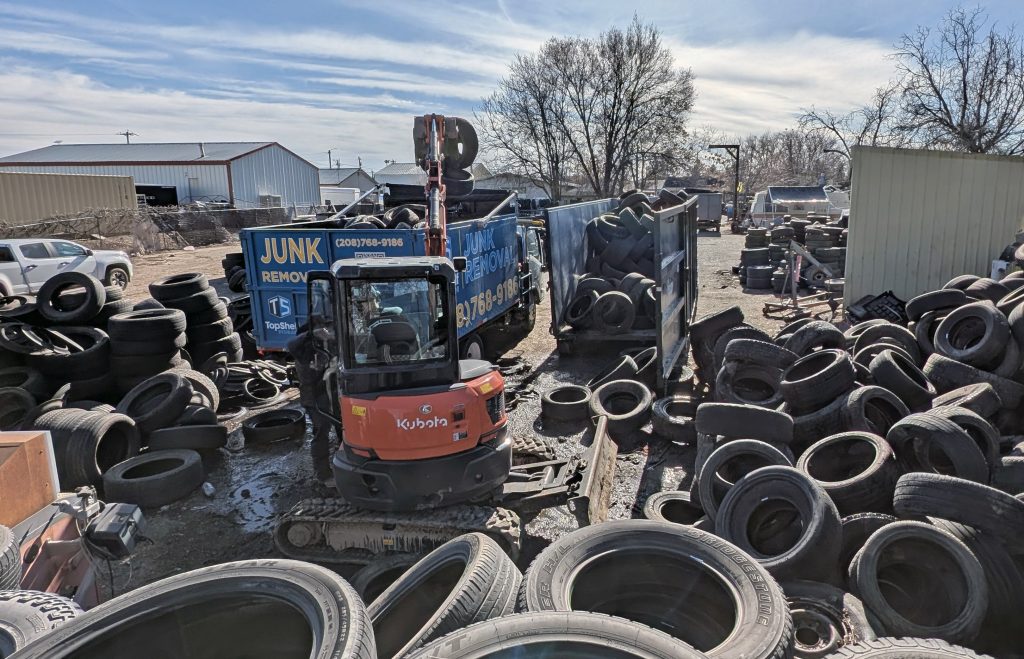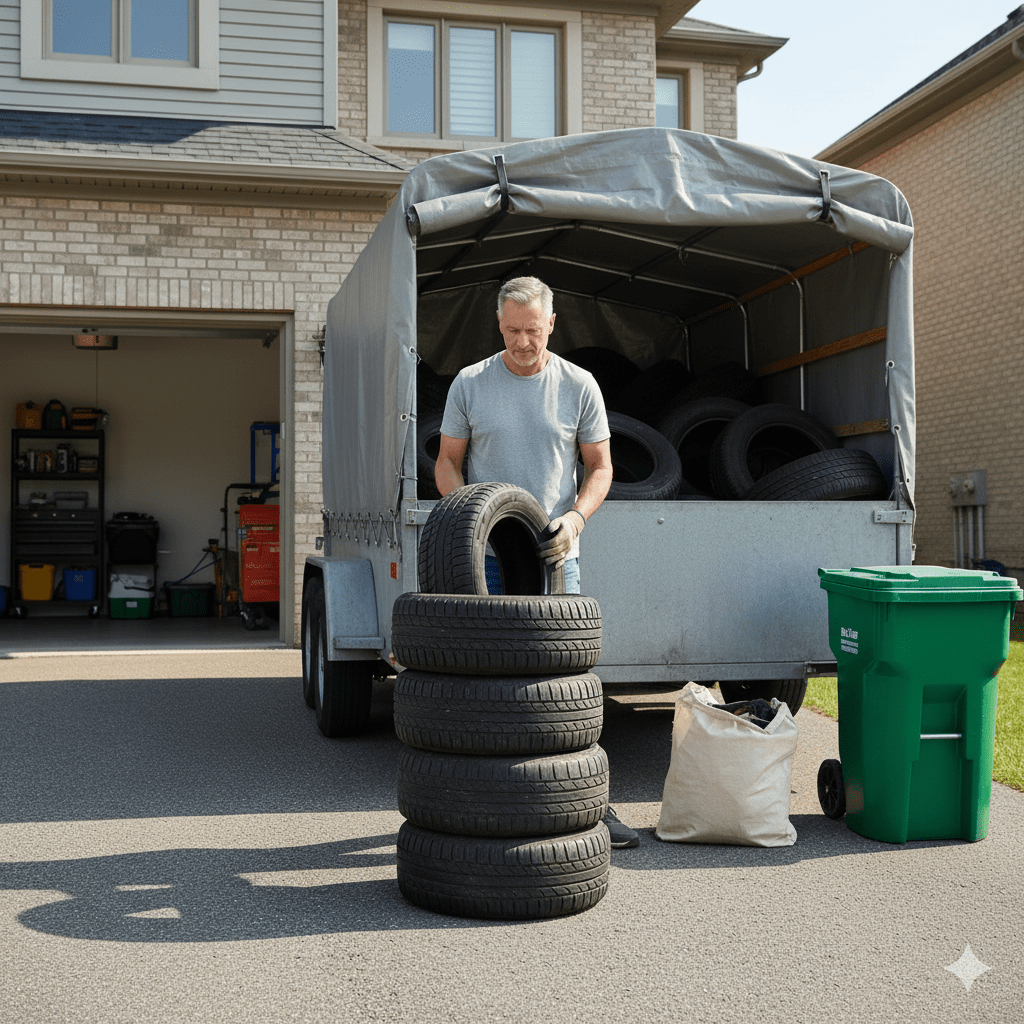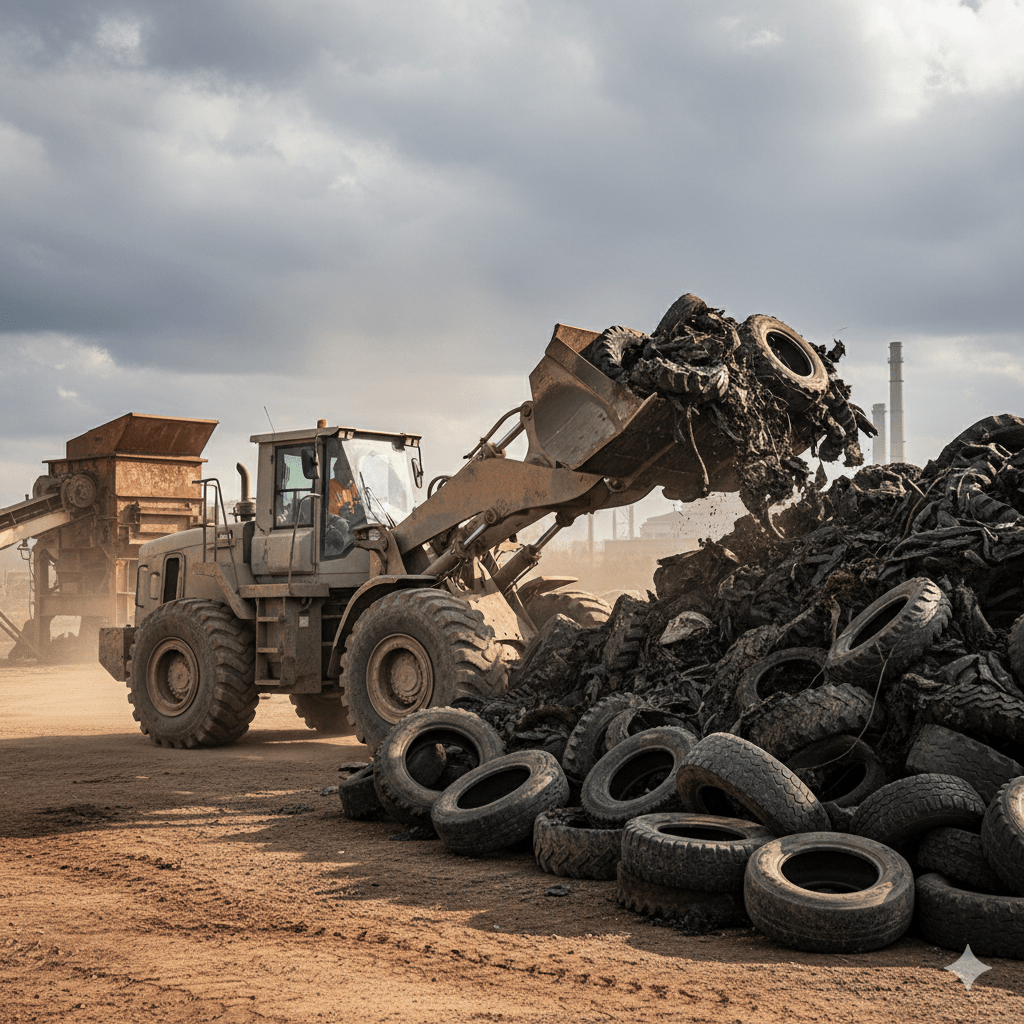Tires don’t vanish because you stack them neatly and whisper “be gone.” They’re heavy, dirty, regulated, and allergic to landfills. The price to make them legally disappear isn’t a mystery number; it’s a function of mass, miles, rules, seasons, and how many curveballs your pile can throw. Here’s how the math actually moves.
Size and Type of Tires
Tire size isn’t just a measurement—it’s a cost multiplier.
- Passenger & light truck (P/LT): the baseline. Off-rim, dry, and staged? You’re in “standard” territory.
- On-rim or bead-locked: added labor to demount, extra weight, knuckle tax. Expect a per-tire surcharge.
- Medium/heavy truck (MD/HD): bigger carcasses, heavier loads, different recycler fees. Sometimes priced in bands (e.g., 19.5″, 22.5″, super singles).
- Off-road/ag/OTR: tractor, skid steer, loader, aircraft, mining—these live in their own pricing galaxy. Often per-tire quotes with equipment minimums.
- Condition matters: waterlogged, mud-caked, packed with concrete, or full of trash = slower load, higher tip fees. Sidewalls cut open? Some facilities require it.
Rule of thumb: larger, heavier, dirtier, and on-rim push price up—every time.
Distance to Disposal or Recycling Facilities
You’re not paying for teleportation. Routing eats the clock.
- Haul miles: the farther the tire recycler or transfer station, the fewer loads a truck can run per day. Your pile funds the lost opportunity.
- Backhauls & routing windows: tight receiving hours at recyclers create dead time or overnight holds. Efficiency up or down shifts your rate.
- On-site wait: scales, manifests, and unloading queues—those minutes land on your invoice.
Shorter miles + predictable docks = nicer numbers.

State and Local Disposal Regulations and Fees
Tires have rules. Break them and the bill grows teeth.
- Landfill bans: many states prohibit whole tires in landfills. You’re headed to recyclers, TDF (Tire-Derived Fuel), or crumb rubber processors—each with fee structures.
- Per-tire surcharges: state scrap-tire fees (collected at sale) don’t always cover end-of-life; expect additional disposal charges at drop.
- Manifests & registration: licensed haulers, transporter IDs, and tracking forms. Paperwork is time; time is money.
- Preparation requirements: some sites demand off-rim only or sidewall cuts. Noncompliance means “no thanks” or a premium rate to fix it onsite.
- Load integrity: mixed loads (tires + general debris) lose recycling pricing and switch to contaminated load fees.
Compliance isn’t optional; it’s baked into cost.
Seasonal Demand Fluctuations
The calendar nudges your quote—quietly, then all at once.
- Spring clean & pre-summer: shops and homeowners purge; recyclers get slammed; haulers book out; rates creep.
- Fall swap-overs: snow-country tire changes mean sudden volume spikes.
- Ag/harvest cycles: tractor/implement tire turnover hits in waves—especially in rural markets.
- Construction surge: warm months = more equipment tires and more prime-time pricing.
If your timing is flexible, shoulder seasons can save money.
Additional Services and Disposal Methods
What you ask for beyond “grab the pile” moves the meter.
- Site labor: scattering across a field, basement piles, behind-the-fence drags, or attic finds—each adds minutes.
- Demounting: popping tires off rims on-site costs tools, time, and sometimes a dedicated tech.
- Cleaning & staging: stacking, banding, palletizing, or cutting sidewalls for facility specs = line items.
- Disposal pathways:
- Crumb rubber/mulch/aggregate: cleaner loads, better diversion—fees vary by market.
- TDF (cement/pulp kilns): steady outlets, often cheaper per ton; moisture penalties apply.
- Retread/reuse: credit possible for quality truck casings; not for passenger tires that lived a hard life.
- Access gear: skid steers, grapples, roll-offs, box trucks—equipment minimums or mobilization charges apply.
Service = outcome. Outcome = price.
Bottom line
Tire removal services don’t price jobs at random—the cost depends on tire size and type, hauling distance, regulations, season, and service needs. Prep your pile, follow the rules, and choose a recycling-focused pathway. Done right, those stacks of rubber leave quickly—replaced with a clean pad and a receipt you can feel good about.






